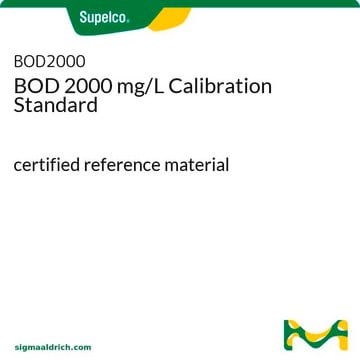SCR518
Mouse STEMCCA Cre-Excisable Constitutive Polycistronic (OKS) Lentivirus Reprogramming Kit
Sign Into View Organizational & Contract Pricing
All Photos(1)
About This Item
UNSPSC Code:
12352207
eCl@ss:
32161000
NACRES:
NA.81
Recommended Products
technique(s)
cell culture | stem cell: suitable
Quality Level
input
sample type induced pluripotent stem cell(s)
shipped in
dry ice
General description
Induced pluripotent stem (iPS) cells were first generated from somatic cells by the ectopic expression of the four Yamanaka transcription factors, Oct4, Klf4, Sox2, and c-Myc (OKSM) (Takahashi, 2006). Four factor reprogrammed mouse iPSCs closely resemble mouse embryonic stem cells (ESC) in their morphology, proliferation, and global gene expression profiles. In addition, fully reprogrammed mouse iPSCs have been shown to give rise to chimeric mice that are competent for germline transmission. However, both the chimeras and progenies derived from mouse iPSC have an increased incidence of tumor formation, mainly due to the expression of the oncogene c-Myc (Okita, 2007). The elimination of c-Myc may provide less incidence of tumors in iPSCs. Reprogramming is possible using three factors (OKS) without c-Myc; however the efficiency is extremely low and the kinetics of reprogramming is significantly delayed compared to reprogramming with four factors (Huangfu, 2008). Recent studies have shown that small molecule treatments, by modulating specifc signaling pathways and epigenetic status, can not only enhance reprogramming efficiency but can also replace one or more of the transcription factors.
The Mouse STEMCCA Cre-Excisable Constitutive Polycistronic (OKS) Lentivirus Reprogramming Kit contains high titer Cre-excisable polycistronic (OKS) lentivirus that expresses a modified “stem cell cassette” or STEMCCA comprised of the three transcription factors Oct4, Klf4, and Sox2 (OKS) separated by the self-cleaving 2A peptide and IRES sequences. Also included in the kit are three small molecule reprogramming supplements and Polybrene transfection reagent. Due to the removal of c-Myc, the Cre-Excisable Constitutive Polycistronic (OKS) Lentivirus must be used in combination with the small molecule medium supplements to generate mouse iPS colonies. Together these components have been validated for the generation of mouse iPS colonies from mouse embryonic fibroblasts (MEFs). Mouse iPS cells obtained with this kit displayed characteristic ES cell-like morphology, stained positive for alkaline phosphatase, expressed the correct mouse ES cell marker phenotype (SSEA-1 and Sox-2) and can be rapidly expanded in normal mouse ES cell culture conditions. Following Cre-mediated excision, transgene-free mouse iPS cells can be further expanded and banked.
Components
1. Mouse STEMCCA Constitutive LoxP (OKS) Lentivirus: Two (2) vials of EF1α-STEMCCA-LoxP (OKS) Lentivirus (Part No. CS204448). Each vial contains 15 µL of high titer lentivirus.
2. TGF-ß RI Kinase Inhibitor II Supplement (1000X): (Part No. CS204458) One (1) vial containing 300 µL of the inhibitor in high quality DMSO.
3. GSK3ß Inhibitor Supplement (1000X): (Part No. CS204418) One (1) vial containing 300 µL of the inhibitor in high quality DMSO.
4. Methylation Modulator-A Supplement (1000X): (Part No. CS204419) One (1) vial containing 300 µL of the inhibitor in water.
5. Polybrene 10 mg/mL: (Part No. TR-1003-50UL) One (1) vial containing 50 µL of 10 mg/mL stock of Polybrene transfection reagent.
2. TGF-ß RI Kinase Inhibitor II Supplement (1000X): (Part No. CS204458) One (1) vial containing 300 µL of the inhibitor in high quality DMSO.
3. GSK3ß Inhibitor Supplement (1000X): (Part No. CS204418) One (1) vial containing 300 µL of the inhibitor in high quality DMSO.
4. Methylation Modulator-A Supplement (1000X): (Part No. CS204419) One (1) vial containing 300 µL of the inhibitor in water.
5. Polybrene 10 mg/mL: (Part No. TR-1003-50UL) One (1) vial containing 50 µL of 10 mg/mL stock of Polybrene transfection reagent.
Quality
Tested to confirm the generation of iPS cells from p3 mouse embryonic fibroblasts. Cre-mediated excision of the reprogramming transgenes has been validated in the mouse system. Other cell types have not been tested and thus similar results can not be guaranteed.
Storage and Stability
- Small molecule supplements (components 1-3 above) are stable for at least 6 months when stored at -20°C. Upon first thaw, centrifuge the vial and gently mix the solution. Aliquot into smaller working volumes and freeze at -20°C or -80°C. Upon addition to cell culture media, filter the supplemented media with a 0.22 µM filtration unit. Supplemented media is good for up to two weeks when stored at 2-8°C. Important Safety Note: Wear personal protective equipment when using this product. Avoid skin contact or ingestion of all chemicals used in this protocol. GSK3β Inhibitor Supplement (1000X) and TGF-β RI Kinase Inhibitor II Supplement (1000X) contain DMSO; avoid contact with eyes and skin.
- Polybrene reagent is stable for at least 1 year when stored at -20°C.
- Lentivirus is stable for at least 6 months when stored at -80°C. After first thaw, place immediately on ice and store in working aliquots to avoid further freeze thaws. Avoid freeze thaws as this will result in a decrease in the virus titer. Important Safety Note: Replication-defective lentiviral vectors are not known to cause any diseases in humans or animals. However, lentiviruses can integrate into the host cell genome and thus pose some risk of insertional mutagenesis. Material is a risk group 2 and should be handled under BSL 2 controls.
Legal Information
Storage Class Code
10-13 - German Storage Class 10 to 13
Certificates of Analysis (COA)
Search for Certificates of Analysis (COA) by entering the products Lot/Batch Number. Lot and Batch Numbers can be found on a product’s label following the words ‘Lot’ or ‘Batch’.
Already Own This Product?
Find documentation for the products that you have recently purchased in the Document Library.
Protocols
Stem cell reprogramming protocols to generate human induced pluripotent stem cells (iPSCs) including viral and non-viral RNA based methods.
Our team of scientists has experience in all areas of research including Life Science, Material Science, Chemical Synthesis, Chromatography, Analytical and many others.
Contact Technical Service







